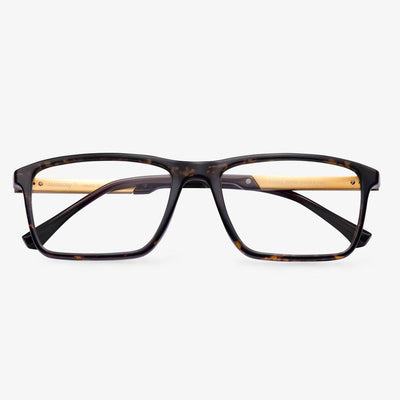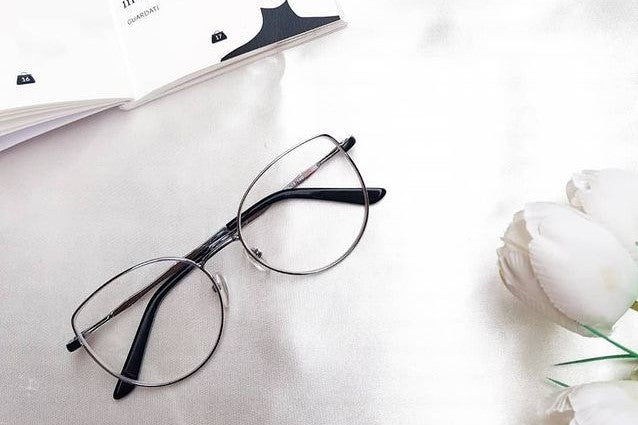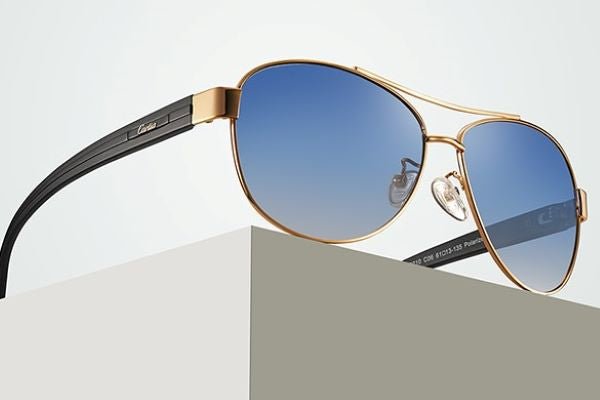How do fishing goggles work?
When fishing in calm water, the light is straight to us. Because of the wind and waves on the water, there will be countless reflective surfaces, just like we face countless mirrors, leading to not clear float. For a long time, eyes will be very tired. Fishing sunglasses block the uncomfortably bright light and protect the eyes from UV damage. All of these functions are achieved by metal powder filters that 'select' light as it comes in.
The frame of prescription glasses
At present, the more common materials for frames are non-metal and metal. Non-metals mainly include TR90, sheet material, etc., and metals include alloys, titanium, and so on. TR90 and sheet material are actually plastics, but they are firm and are not easy be deformed at room temperature. Also, they have good formability so that they can be made in many fashionable styles. The general alloy material has good firmness and flexibility, but the disadvantage is that it is easy to fade. The pure titanium frame is corrosion-resistant and very strong. It is about 40% lighter than the general alloy frame. It must be welded and electroplated in an oxygen-free state, which requires high equipment and technology. Relatively speaking, the price of TR90 and alloys will be lower, and pure titanium will be more expensive. You can choose according to your budget.
What Are Polycarbonate Glasses?
Polycarbonate was developed in the 1970s for aerospace applications and is currently used for the helmet visors of astronauts and for space shuttle windscreens.
Polycarbonate lenses were introduced in the early 1980s in response to a demand for lightweight, impact-resistance lenses. Since then, polycarbonate glasses have become standard for safety glasses, sports goggles and children’s eyewear.
Polycarbonate glasses are thinner and lighter than regular plastic lenses. They also provide 100 percent UV protection and are up to 10 times more impact-resistance than plastic or glasses lenses.
In addition, Polycarbonate lens provides clearer and more comfortable vision if anti-reflective coating is applied to the lenses, which can eliminate distracting lens reflections that interfere with vision, particularly when driving at night or in other low-light conditions when glare sources are present.
After learning some basic information about polycarbonate glasses, we will show you the advantages and disadvantages of polycarbonate lens.
Buy Glasses For Kids - Appropriate Frame
To choose a frame for the child, we must first consider the measurement of the bridge of the nose of the child, and the pupil distance. Furthermore, if the eye is farsighted and the pupil distance is too large, it will produce the prism effect from the bottom out. If it is myopia and the pupil distance is too large, it will produce the prism effect bottom-inward. If the pupil distance is too small, it will have the opposite effect. The frame should be light, light glasses will not affect the development and shape of the child's nose bone.
What difference do mono-focal glasses and multi-focal glasses have?
A mono-focal lens is a lens with one focal point. Usually, the myopic far-sighted presbyopia that we see belongs to mono-focal glasses. There is only one diopter on one lens, and this is the single focal point. Multi-focal glasses are lenses that have multiple focal points, that is, multiple diopters. Both mono-focal glasses and multi-focal glasses are visual correction tools, but mono-focal glasses can meet basic vision needs, like fatigue relief, control of depth of diopters, and focus on different distances such as the need to see far and near.But because there are many different diopters on a multi-focal glasses lens, so the elderly can not only see far after wearing. When they see close distance, they do not need to take off glasses or wear reading glasses. Wearing multi-focal glasses is not easy to fatigue.
What Is Bifocal Lens?
Changes in vision seem to be related to age. Presbyopia, a common eye condition that occurs in middle age, causes changes in your eye’s ability to focus. But this condition can be corrected by wearing bifocal glasses.
Bifocal lenses are divided into two parts to accommodate two different prescriptions in one lens. One area of the lens will have one prescription (usually distance) and a segment in the lower half will have the other (usually near vision).
The bifocal glasses were invented by Benjamin Franklin, who solved his own vision problem by taking the lens from his reading glasses and distance glasses and cutting them in half. Then remade the cut lenses into a single pair of bifocals and put the distance lens on top and the reading lens on the bottom.
The production process of titanium frames is complicated.
The production of titanium frames requires special processing equipment, special welding technology, and electroplating technology, which has many processing procedures and high production costs. In particular, some glasses choose the most difficult pure titanium andβtitanium. Titanium is very soft and very sticky, and very lively at high temperatures,so the processing is very difficult.










































